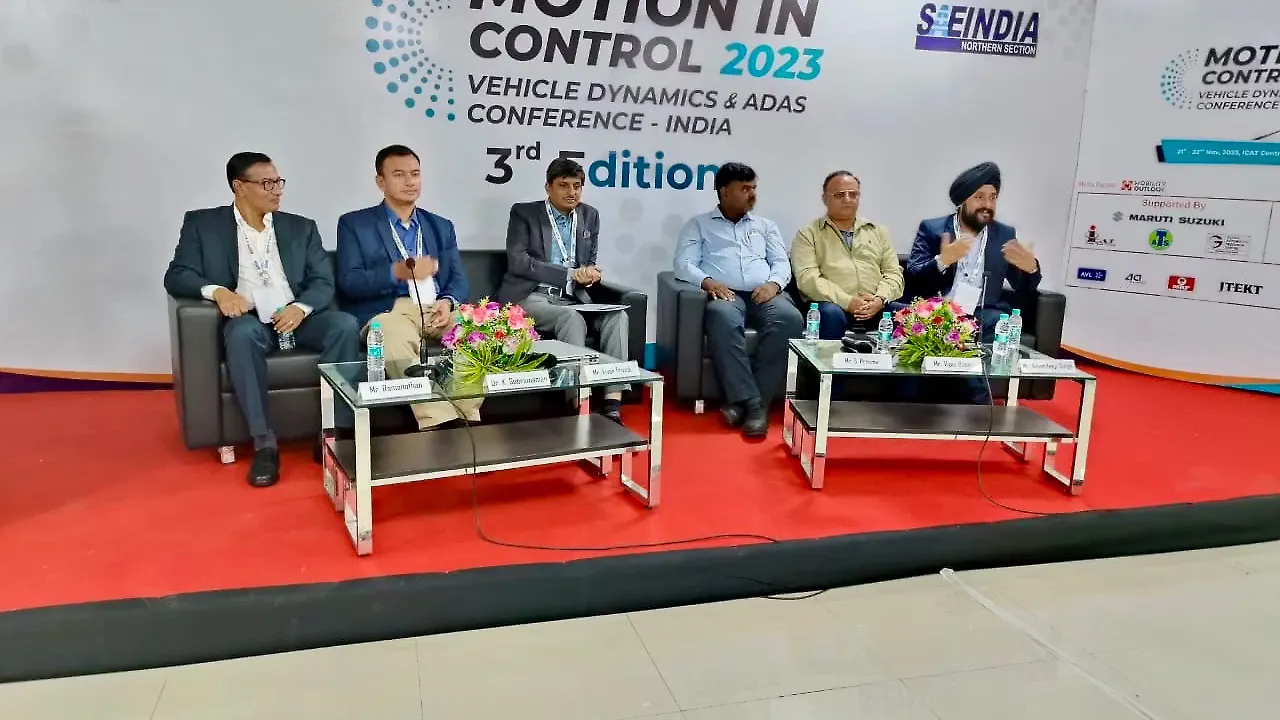
To comprehend ADAS, one must step into the driver's seat, recognising that all drivers require assistance in the current landscape fraught with challenges such as traffic congestion, emphasised Dr K. Subramanian, Senior VP of Product Development at Ashok Leyland.
Speaking at the Motion in Control 2023 – Vehicle Dynamics & ADAS Conference India, held at the Global Automotive Research Centre (GARC) in Chennai, Subramanian drew parallels between a cyclone alert for a city and the preparations to mitigate it, relating it to the imperative of reducing road accident fatalities in the Indian automotive industry. He proposed that the industry capitalise on the current situation, beginning with technologies like ADAS – Advanced Driver Assist System.
While acknowledging ADAS's immense potential, Subramanian asserted that it should be a companion, not the master. Drawing from a recent experience of hiring a driver and refraining from driving, he found that alerting or suggesting potential threats, such as a rapidly approaching two-wheeler, was not embraced by the driver. Consequently, he contended that an 'Advanced Driver Advisory System' is unacceptable, as it risks becoming a 'driver annoyance system' rather than a genuine assistance system.

In addressing the escalating road accidents and diverse driving conditions, Subramanian emphasised the need for sustained road safety efforts. He proposed four focal points for ADAS to enhance its utility: Eco Mode (EM), Traffic Congestion Assistance (TCA), Curve Assist (CA), and Worst Damage Road Information (WDRI).
According to him, EM optimises vehicle performance for fuel efficiency and emission reduction, encouraging eco-friendly driving habits. TCA manages speed in traffic, promoting safe following distances and discouraging aggressive driving. CA provides steering support for safe navigation through curves, educating drivers on controlled and smooth steering inputs. WDRI offers information on road conditions and influences driver behaviour to minimise wear and tear.
Despite India representing only 1% of global vehicles, it accounts for 11% of worldwide fatalities. Subramanian advocated for effective and context-specific solutions tailored to India's unique conditions. While existing road safety technologies show promise, a significant percentage (54%) of accidents remain unaddressed. The rest is contributed by ESP (16%), AED 15% and lane assist and crossing 15%, he said.
He concluded that the integration of ADAS has transformative effects on driving behaviour, resulting in reductions in fuel consumption, emissions, and unsafe practices, marking a stride towards eco-friendly and safer driving habits.
Vivek Trivedi, Senior VP Engineering, Maruti Suzuki, emphasised that ADAS should be viewed not merely as a safety feature but as a support function. He acknowledged the automotive industry's progress in tandem with global peers but highlighted the challenge of balancing vehicle weight with improved comfort and efficiency. Trivedi recommended the use of alternative materials, considering India's unique infrastructure scenario.
From the perspective of tyre technology, Vipin Basan, VP of Design and Development at JK Tyre, stressed the critical influence of tyre factors on ADAS. He highlighted the significance of predictable tyre performance in various conditions, including temperature extremes and diverse road conditions. Basan suggested that inputs from tyres could significantly enhance ADAS performance, and JK Tyre is actively working on sensor-embedded tyres to support the requirements of next-gen vehicles.
S Ramanathan, Vice Chair of SAENIS & MD at ATS, reflected on the evolution of customer acceptance of new technologies, drawing parallels with the past resistance to using laptops during vehicle testing. He emphasised the advantages of technologies like front-loading and hardware-in-loop in accelerating test cycles and compressing time to market. Ramanathan noted the shift from optical systems to robots in assessing vehicle dynamics.
Amardeep Singh, Vice Chair of SAENIS & GM – Engineering at Maruti Suzuki, concluded the inaugural session by tracing the evolution of ADAS from the 1920s to its current rapid uptake after legislation in 2019. He emphasised that, ultimately, ADAS should meet customer expectations in the unique and challenging scenario of India.
Also Read